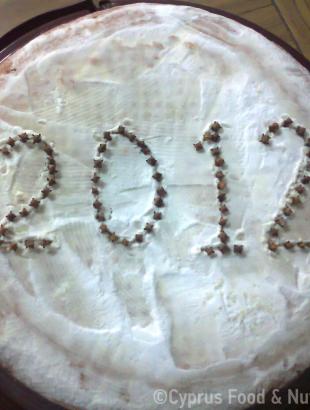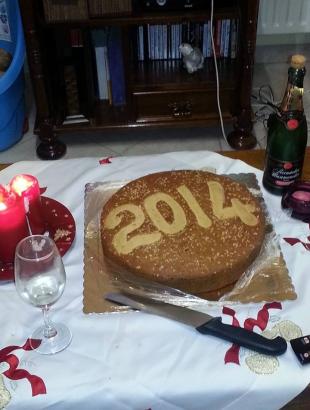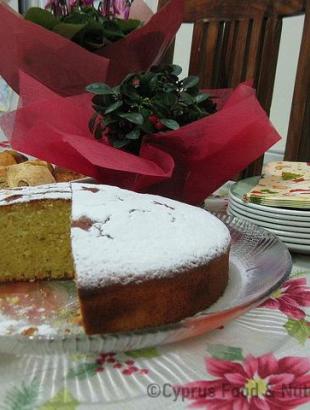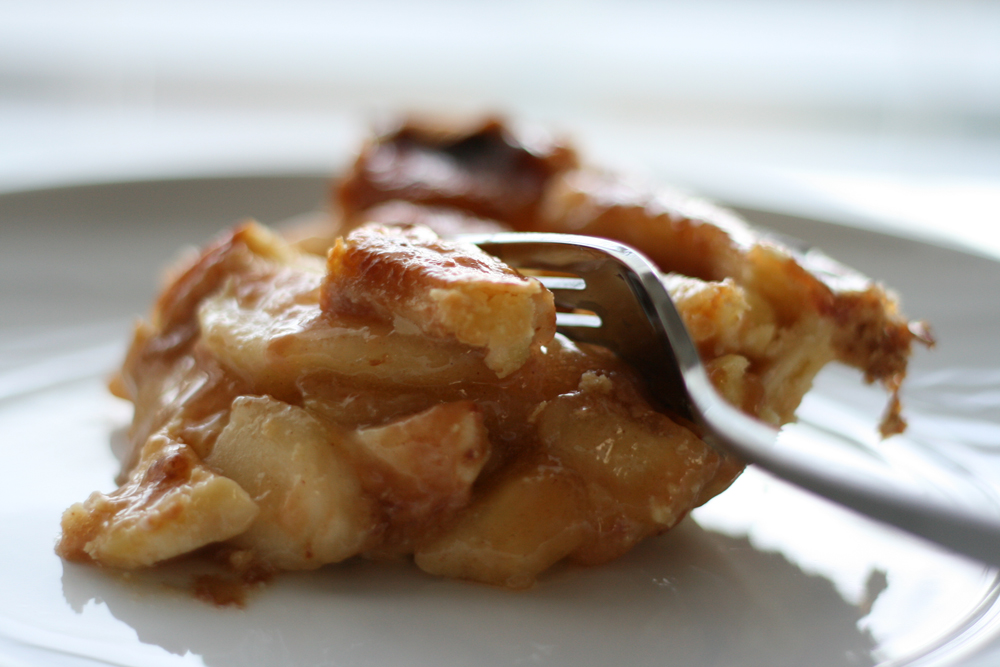Pitta (bread) made for New Year's day which is Agios Vassilis nameday (hence the name vassilopitta), in which a coin would be placed (Erotokritou 1989, 353). Today, this pitta has been replaced with a cake in most households but the custom and ritual are still retained.
Name - Recipe
Βασιλόπιτα.
Pitta (bread) made for New Year's day which is Agios Vassilis nameday (hence the name vassilopitta), in which a coin would be placed (Erotokritou 1989, 353).
Sourdough in the size of an orange
Flour as much as needed
1 glass of sugar
½ tsp salt
1 tsp mastic
1 tsp cinnamon
1 tsp aniseed
1 tsp mahleb
3 tbsp vegetable shortening
1 glass of milk
2 small cups of hot water
Sesame as much as needed
Preparation of the dough: Put the water, milk, vegetable shortening, salt and sugar in a mixing bowl and dissolve the sourdough starter. Then add flour as much as it takes and the aromatic herbs (mastic, cinnamon, mahleb, aniseed). Start kneading the ingredients and make sure your dough is not as stiff as the prosphoro. Then cover it and let it rest for 10 minutes. Next, cut the dough and on the board (or countertop), give it a round shape. At this point add the coin, which you have wrapped in moist parchment paper to prevent the dough from getting soggy. Then you place the dough in a paneri (a weaved tray) or another surface which is contains sesame seeds and aniseed so as to cover the dough all over.
Ploumisma (decoration) of vassilopitta: Place the vassilopitta back on the board and give it its final round shape. Then take a comb and make a cross on it i.e. two strings vertically and two horizontally. Then using scissors, cut the dough up and down, right and left to create the rose in the middle. Finally, scorch it around the circumference with a knife.
Baking: Place the vassilolopitta in a baking tray, on the bottom of which you place parchment paper. Cover it to proof and then bake it in the oven in the middle level. The oven should be preheated for 15 to 20 minutes on high heat. 20 minutes after putting it in the oven, place a small bowl with water on the bottom level to prevent the bottom of the pitta from burning. At the half hour mark, remove the vassilopitta with the parchment paper from the baking tray, place a piece of foil on the baking tray (it will be under the parchment paper and vassilopitta) to prevent its bottom from burning, then put it back in the oven. At this point, lower the oven temperature to half to brown the top of the pitta. In about an hour and ten minutes it will be ready. (Flourou K. Parpouna, 80 years old from Lysi)
Baking in the oven.
In the old days, vegetable shortening did not exist, so it was not an ingredient of vassilopitta.
Functional and symbolic role
Consumed on New Year’s day.
Grandma Flourou retains the custom to this day. On New Year's Eve we all gather in one house for dinner, and after midnight we cut the vassilopitta. Vassilopitta cutting has a ritual character. First, the host of the household crosses it with a knife and then he/she cuts a piece for Christ, the second one for Virgin Mary, the third one is for Agios Vassilis (Santa Claus who will "visit" at night to bring gifts), the next one is for the host and then for the rest of the household members, starting from the oldest and ending with the youngest. Usually Vassilopitta is prepared 2-3 days before New Year's Eve or even on the same day in the morning. This is a traditional recipe that grandmother has learned from her mother and has kept it unaltered to this day. Sometimes Grandma may even put two coins in vassilopitta instead of one since our family is quite large. (Flourou K. Parpouna, 80 years old from Lysi)
On New Year's Eve in Cyprus, this pitta is placed in a tray filled with kollyva and a candle is lit in the centre of the pitta. The tray with the kollyva and vassilopitta is placed on a pile of wheat. Next to it is a glass full of wine and a pouch of money are placed, to be blessed by Agios Vassilis (Santa Claus). On the following day after the Mass, all the members of the family attend the breakfast table and the head of the family cuts the vassilopitta and distributes it proportionally to all the members of the family, after cutting the first portion for Christ and the second for the Virgin Mary. The one who finds the coin in his share is considered lucky. If the coin is found in Christ's or the Virgin's share, it is picked up by the hostess, who keeps it until the following year to place it again in the vassilopitta. (Erotokritou 1989, 353-4)
Additional information and bibliography
In the old days, sesame seeds were black and to whiten them we would use the ash from the vines. We would put the sesame seeds in a pot with the ash and boil them until they would turn white. Now that there are white sesame seeds in the market you just boil it in a pot of water and add some lemon. Then you put it in the weaved tray to dry a bit and before you use it, you put aniseed give aroma to the dough. (Flourou K. Parpouna, 80 years old from Lysi)
Erotokritou, I. (1989).Glossary of Ioannis Erotokritou (Publications of the Cyprus Centre for Scientific Research XIV - Materials for the compilation of a historical dictionary of the Cypriot dialect Part C), Cyprus Centre for Scientific Research, Nicosia.
Oral testimony: Flourou K. Parpouna, 80 years old from Lysi. Recording: Christiana Parpouna, October 2010. Edited by Stalo Lazarou.
Stalo Lazarou, Christiana Parpouna





